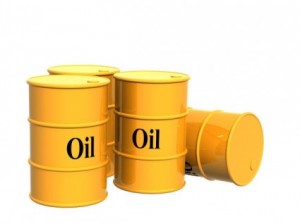 Oil prices rose on Monday, returning price to where they stood before the OPEC meeting, which took place in Vienna on May 31. Brent oil for July delivery reached a session high of $102.27 dollars per barrel, followed by a decline. Brent traded at $101.21 a barrel at 12:59 GMT, up 0,79% on the day.
Oil prices rose on Monday, returning price to where they stood before the OPEC meeting, which took place in Vienna on May 31. Brent oil for July delivery reached a session high of $102.27 dollars per barrel, followed by a decline. Brent traded at $101.21 a barrel at 12:59 GMT, up 0,79% on the day.
WTI crude also made up for the previous losses and traded at $92.42 at 13:01 GMT, gaining 0,51% on the day.
Torbjoern Kjus, a senior oil analyst at DNB ASA (DNB) in Oslo, said by phone for Bloomberg: “We are back at where we were left at the start of Friday. Chinese numbers were taken negatively, but there are other arguments, such as refineries coming back from maintenance, and there’s heavy oil field maintenance going on.”
Prices were pressured last week by the upcoming OPEC meeting in Vienna, scheduled for May 31. Member countries agreed to leave output policy unchanged and keep their quota of around 30 million barrels per day. The Organization of the Petroleum Exporting Countries came to an understanding that it should not change the pace of oil production as prices are holding around the organization’s preferred level.
This spurred further concern about oil prices as supply is ample, boosted by the U.S. shale oil boom. Russia also reported it pumped out larger quantities of oil. Negative U.S. and China economic data published last week pressured oil down. U.S. Q1 GDP reading mismatched its forecast by 0,1% and stood at 2.4%. China’s official government manufacturing Purchasing Managers’ Index rose by 0.2 to 50.8, but still remained near the neutral level of 50. Last week the IMF cut its economy growth forecast for China to 7.75%, down from 8%. The Organisation for Economic Co-operation and Development also trimmed its forecast to 7,8% from 8%. U.S. and China are the worlds two biggest oil consumers accounting for respectively 22% and 11% of the global oil consumption.
Positive economic news today about the Euro zone strengthened the Euro against the greenback and supported oil prices. Manufacturing PMI for the single currency block and for its major economies showed positive readings, some of which were still below the neutral 50 value, but higher than the preceding month. This brought a positive sentiment for oil demand in the worlds third biggest oil consumer – the European Union. The stronger Euro also made the dollar weaker against its major peer in the dollar index, which declined 0,1% and traded at 83.23. The greenback and dollar-priced commodities tend to trade inversely. A weaker dollar boosts demand for raw materials as an alternative investment and also makes them cheaper to buy for foreign currency holders.





